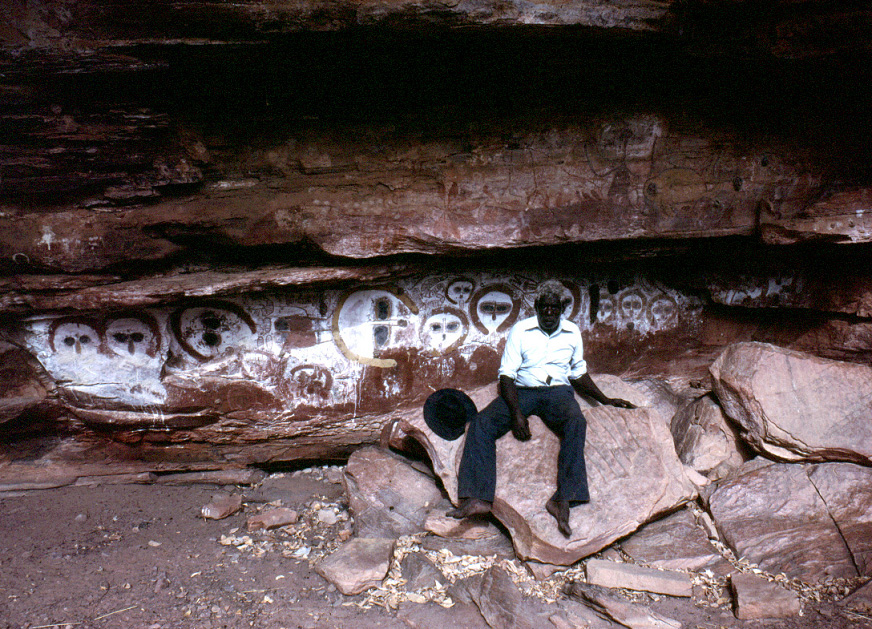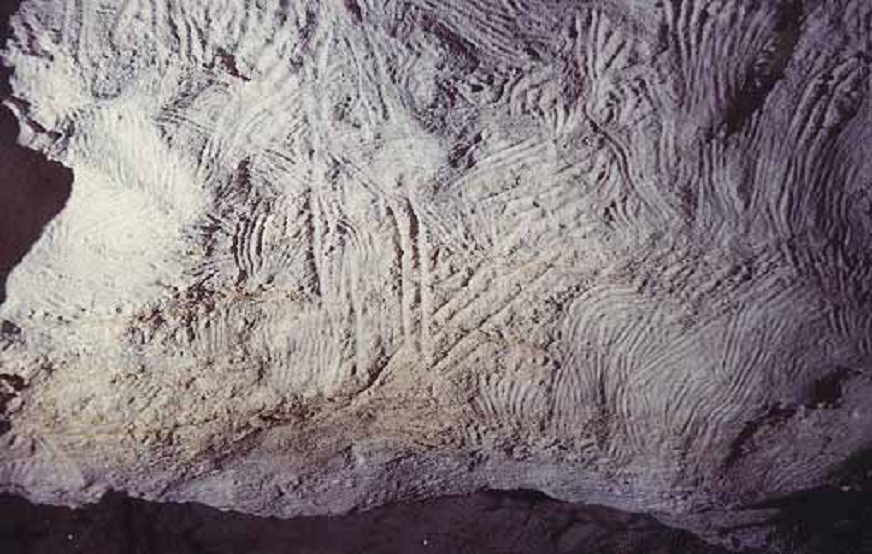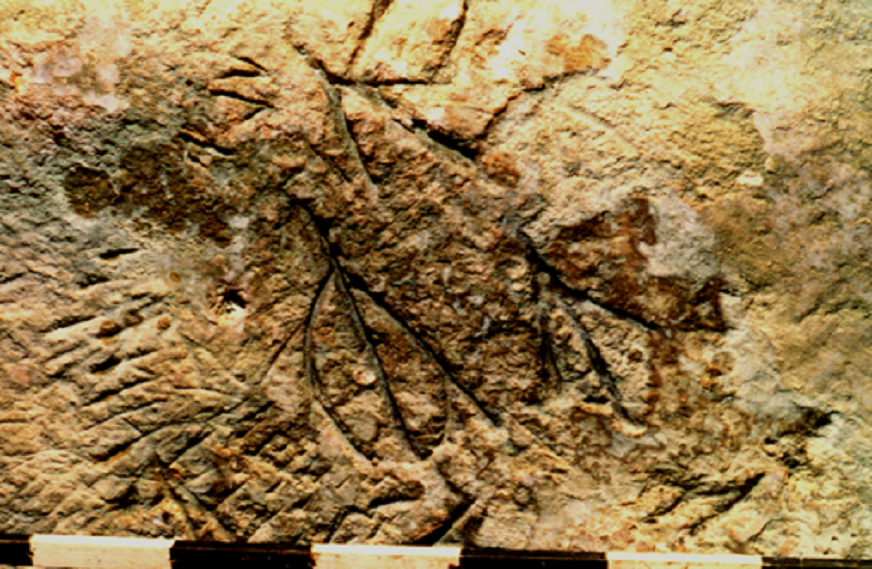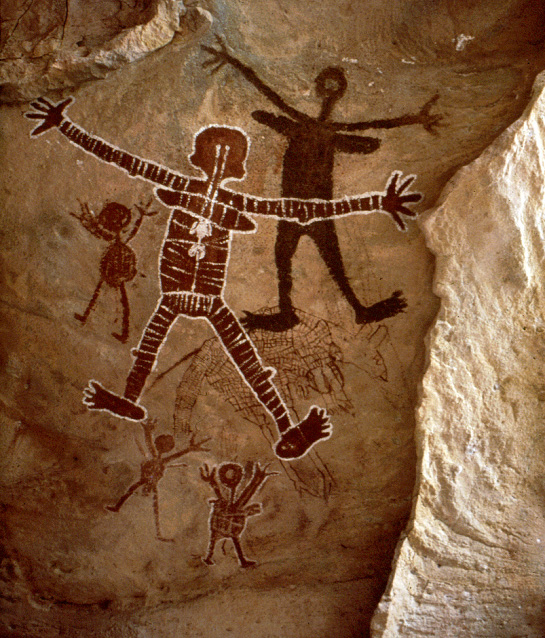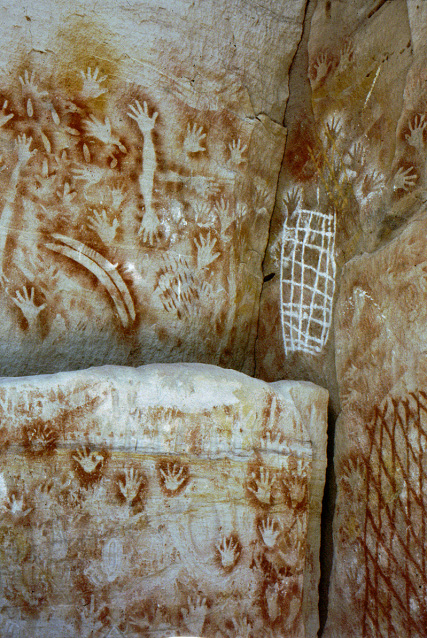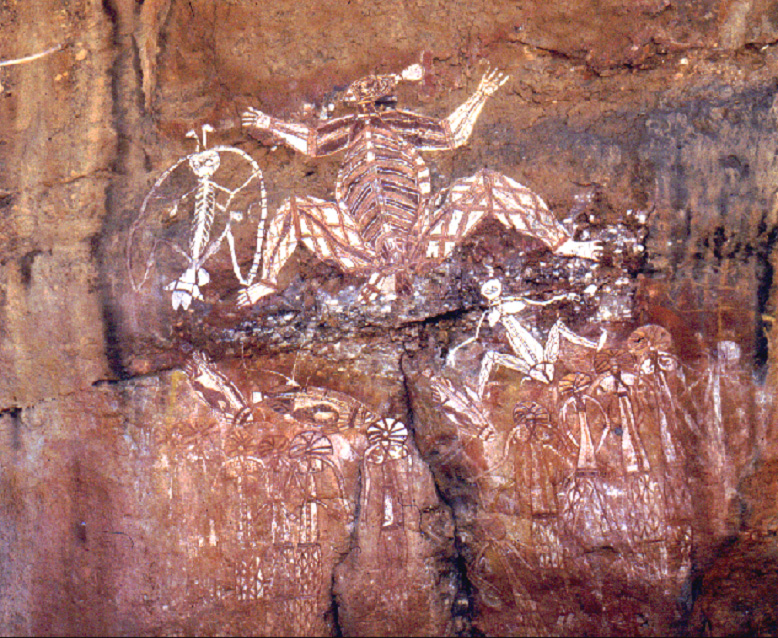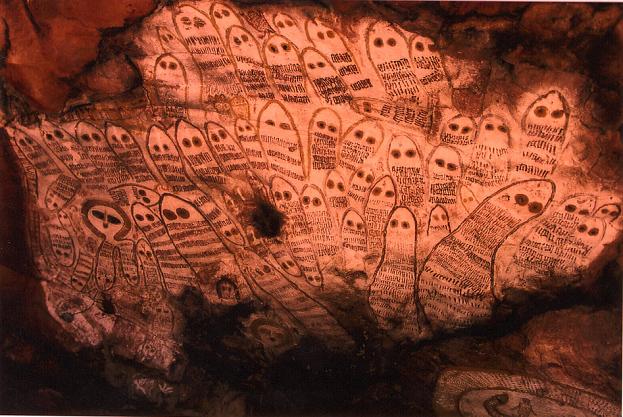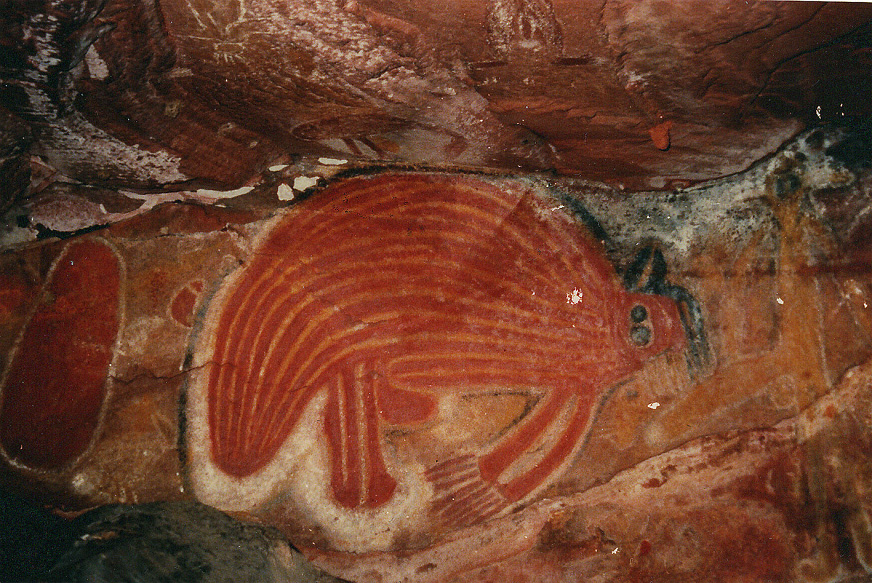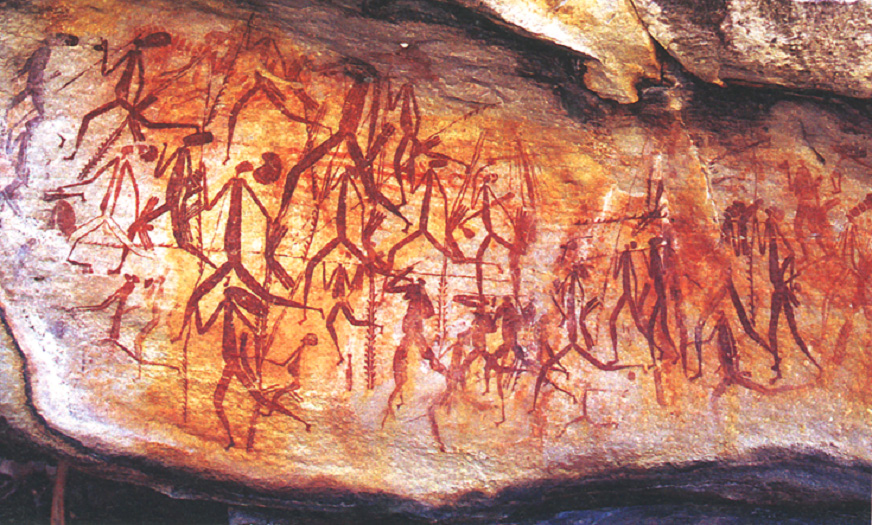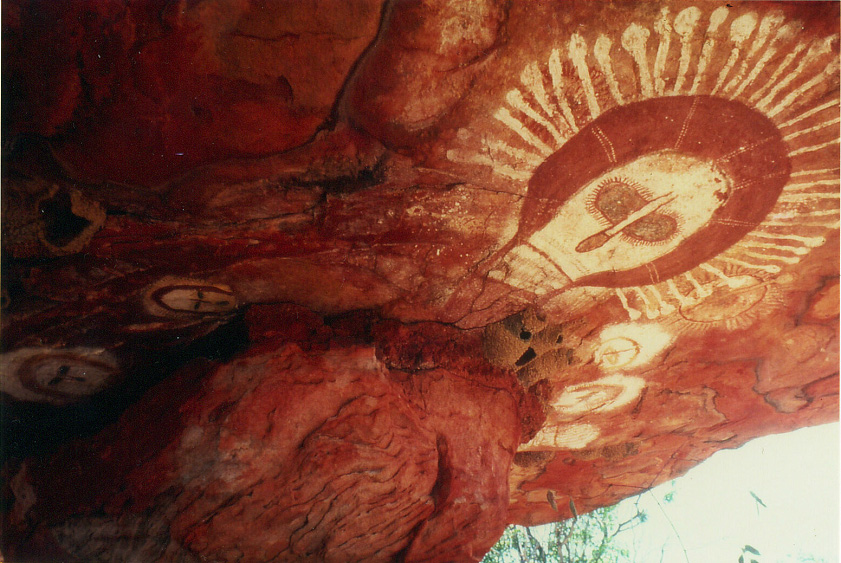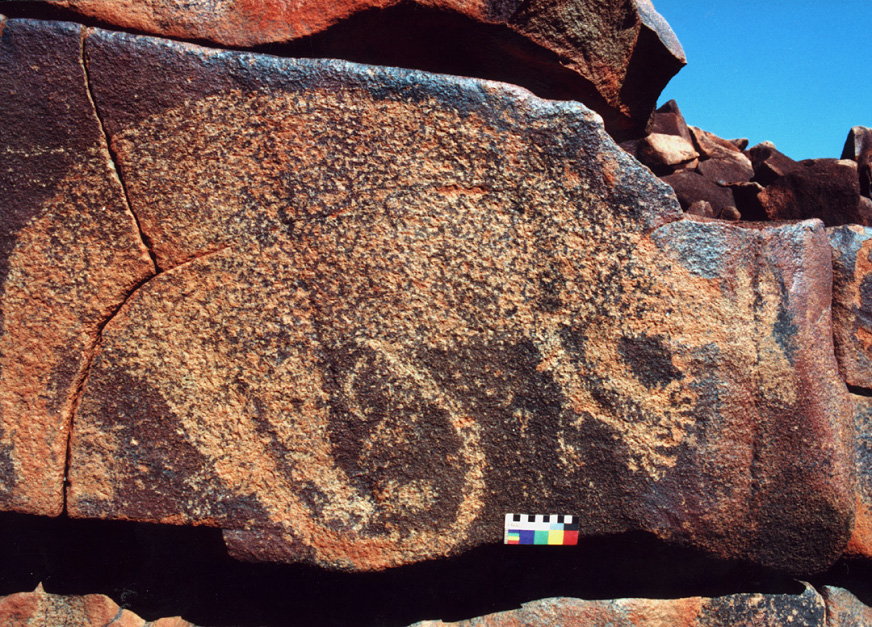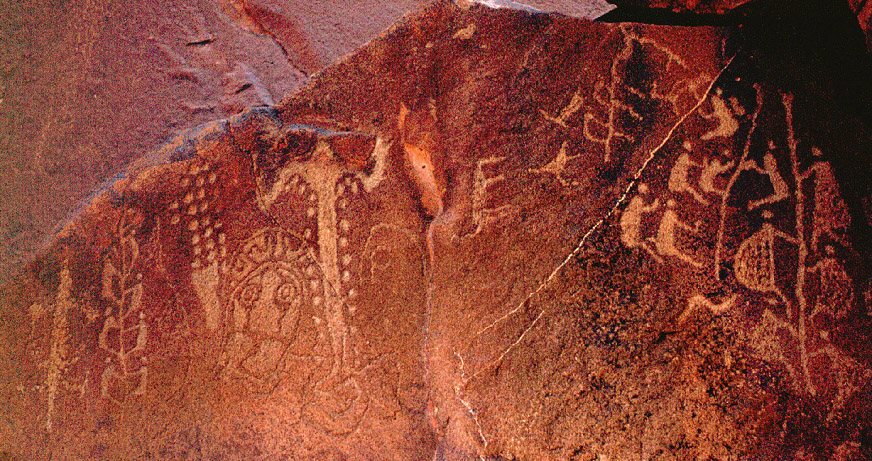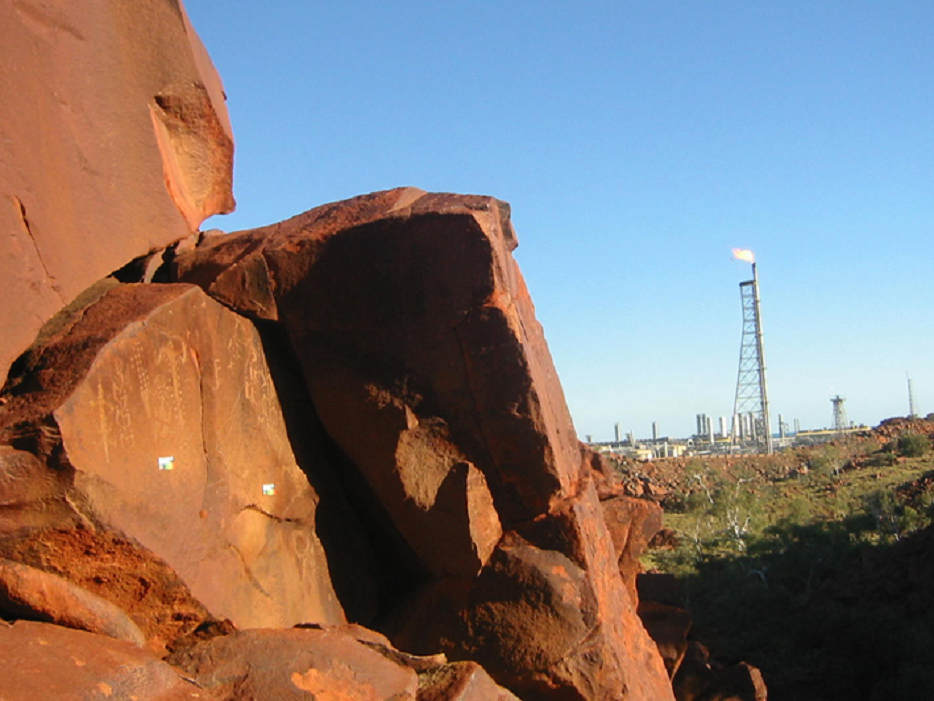Australian Rock Art
Convener, International Federation of Rock Art Organisations
Abstract
Australia is distinguished not only by possessing the largest concentration of rock art, but also by being the only country that has continuing broad access to ethnographic interpretation of rock art by its traditional custodians. Moreover, Australia has the largest organisation of rock art researchers, the premier scientific journal in the field, and the largest academic congress in the discipline. This paper illustrates the work of rock art researchers, and it offers a brief overview of the huge corpus of Australian rock art. The major regional concentrations of it are introduced, with special attention given to the cave art of Australia, which is the world's second-largest body of this particular phenomenon. Also considered are the methodology of estimating the age of rock art, the issue of its interpretation, and the questions of its preservation and protection. The paper closes with a brief synopsis of the current campaigns to protect rock art in Australia.
Introduction
Australia, almost the size of Europe but with a population only a third of that of Italy or Britain, boasts not only the greatest concentration of rock art in the world, but also the highest number of rock art researchers relative to population size. The work of these researchers over the past twenty or so years falls primarily into four areas: inventories and new discoveries, analytical studies and dating work, ethnographic studies, and conservation and site management projects. This work will be briefly reviewed here.
The perhaps most interesting aspect of Australian rock art research is that the country's rock art scholars are significantly less inclined to attempt interpretation of rock art than those of any other world region. Bearing in mind that Australia is universally agreed to have the strongest ethnographic evidence for the original meanings of rock art (Fig. 1), this presents us with a paradox. It would seem that Australian rock art researchers are either excessively pessimistic about interpreting rock art, or other rock art researchers are excessively optimistic about their powers of interpretative discrimination. The evidence from Australia certainly favours the latter alternative.
However, this is not all we have learned from the rock art of the Great Southern Land. Australian researchers, opting for scientific investigation in lieu of the creation of a modern mythology about rock art, have been very active in such fields as physical rock art analysis, age estimation, preservation techniques and methods of site management. Indeed, Australia is a leader in these fields, a position reinforced by the research work conducted especially since the formation of the Australian Rock Art Research Association (AURA).
Australian cave art
In a speleological context, however, the most relevant type of Australian rock art is perhaps the continent's cave art, which happens to be the world's second largest national body of this phenomenon. Currently the occurrence of authentic cave art has been confirmed in forty-six sites, distributed over four regions across the southernmost parts of the mainland and Tasmania (Bednarik 1990). The four mainland areas of confirmed cave art are the limestone karst bodies of the far south-west (north and south of Perth), the Nullarbor, the Portland to Millicent region centring on Mt Gambier, and a single site just north of Buchan. In most cases, Australian cave art consists of petroglyphs (rock art made by a reductive process), pictograms (made by an additive process) occur in only eight caves. The latter are nearly absent in the main body of Australian cave art, at Mt Gambier, although in 2007 some otherwise invisible motifs were discovered through ultra-violet illumination in one cave.
Among the Australian cave petroglyphs, several genres or styles have been recognised, all of which are entirely non-figurative (non-iconic). Finger flutings, similar to those found in many French and Spanish Palaeolithic cave art sites, occur wherever soft deposits of moonmilk speleothem (Montmilch) have formed (Bednarik 1984), and were found in thirty-four Australian caves so far (Figs 2 and 3). The 'Karake style' has been reported from ten caves, all in the Mt Gambier area, but it also occurs on many archaic rock art sites above ground (Figs 4 and 5). This genre comprises petroglyphs of deeply engraved circles, barred circles and circular mazes, convergent lines motifs (often called bird tracks) and a few other types. There is a tradition of deeply chiselled pits or cupules and heavily pounded rock panels, and a recent tradition of shallow incisions.
It is amply evident that most, but not all, Australian cave art is of the Pleistocene. This is indicated by the superimposition of megafaunal scratch marks (most Australian megafauna had become extinct by around 20,000 years ago) and a variety of speleothems (laminar travertine skins, moonmilk, stalactites and straws); by significant tectonic (structural) changes in the cave morphologies since the art was produced; by indirect dating in two sites (Koonalda and New Guinea 2 Caves); and by direct dating in Malangine Cave (Bednarik 1999). Six of the Australian caves containing rock art have also yielded evidence of underground chert mining, most of which also seems to date from the Pleistocene.
Open air rock art
With such a large national corpus of rock art, the creation of inventories is a long-term process involving many individuals and research teams. Because the greatest concentrations of rock art tend to be in the north of the country, this is where most of the survey work has been focused (Fig. 6). In the far north of Queensland, especially on Cape York Peninsula (Fig. 7), the pioneering work by Percy Trezise (1971) has found a continuation in projects by Andée Rosenfeld (Rosenfeld et al. 1981), Josephine Flood (1987), Noelene Cole (Cole and David 1992), Mike Morwood (1992), Bruno David (David and Chant 1995) and John Campbell (2000; Campbell and Mardaga Campbell 1993). The major concentration of stencil art is centred on the Carnarvon Ranges in Queensland, featuring not only thousands of hand stencils, but also many stencils of other body parts (arms and feet, even whole human bodies), parts of animal bodies (e.g. emu feet) and a wide range of artefacts (Fig. 8). The famous Arnhem Land rock art (Fig. 9), consisting almost entirely of paintings, was initially explored by such researchers as George Chaloupka (1984) and Eric Brandl. It has been the subject of several more recent studies, involving those of Paul Taçon (1987, 1988), Christopher Chippindale (Chippindale and Taçon 1993) and Erle Nelson (2000; Nelson et al. 1995). Howard McNickle (1991) opened up another major rock art region in the Victoria River district (Figs 10 and 11), which is geographically intermediate between Arnhem Land and Kimberley, and comprises both paintings and petroglyphs. Grahame Walsh (1994) and David Welch (1990, 1993, 1995) have explored the massive rock art body of the remote Kimberley during the 1990s. It consists basically of two major painting traditions, the earlier Gwion-gwion paintings (which were once inappropriately called Bradshaws) and the more recent Wandjina art (Figs 12 and 13). Further to the west, in the Pilbara, Robert Bednarik (1973, 2002) still continues the survey he and Bruce Wright (1968) began in the 1960s (Figs 14 and 15). This study of the world's greatest petroglyph concentration has been augmented by the work of Patricia Vinnicombe (1987) and Michel Lorblanchet (1992). Ben Gunn (1995), June Ross, Dick Kimber, Josephine Flood, Andrée Rosenfeld, Julie Drew and others have conducted research in the central part of the country, around Alice Springs and in other areas. It needs to be emphasised that many of these studies have been carried out with the active involvement of local Aboriginal custodians, whose collaboration with researchers has always proved to be highly productive.
While the sites in the north have attracted the greater interest, it should not be overlooked that inventories have also been attempted in some southern regions. For instance, Ben Gunn has worked in the Gariwerd (Grampians mountains) and elsewhere in Victoria, while Robert Bednarik (1990), Elfriede Bednarik, Geoffrey Aslin, Alexander Gallus and Yann-Pierre Montelle explored the extraordinary cave art sites in four limestone regions along the continent's southern coast. Margaret Nobbs (1984) surveyed the sites of the Olary region, Jo McDonald (1992), Hugh Cairns, David Moore and Kelvin Officer (1992) those near Sydney, and John Clegg (1992) focused on Sturts Meadows, a major petroglyph site in western New South Wales. While the rock art of southern Australia is visually not as spectacular as that of the north, the scientific issues it has presented are just as important. Finally, a small corpus of about thirty sites has been studied in Tasmania (Sims 1977; Bednarik et al. 2007), consisting mostly of archaic petroglyphs, some of which seem to relate to some of the cave art at Mt Gambier.
It is impossible at this stage to provide reliable quantitative estimates of Australian rock art and in view of the size of the task, this will remain so for many more years. However, in assembling the best estimates from leading specialists working in the main regions one would expect that there are well in excess of 100 000 rock art sites in Australia. The largest of them comprise several tens of thousands of motifs, but as a very rough estimate of average numbers, a figure in the order of perhaps 500 to 1000 motifs per site seems reasonable.
Analytical studies
Scientific analytical work began in Australia with the introduction of direct dating and nanostratigraphy by Robert Bednarik (1979) during the 1970s (Ward and Tuniz 2000). The tradition of rock art dating which Australian researchers have since developed remains impressive by world standards. Nearly all analytical rock art dating methods currently in use were initially developed or introduced in Australia: carbon nuclide and uranium series analysis of carbonates as well as microerosion analysis by Robert Bednarik (1992, 1999, 2002); radiocarbon analysis of oxalates and inclusions in accretive mineral crusts by Alan Watchman (1990, 1992a, 1992b, 1993a, 1996); carbon isotope dating of paint residues by Jo McDonald and colleagues (1990; first used in South Africa, however; cf. Van der Merwe et al. 1987; Hedges et al. 1987); luminescence analysis of sand grains in wasp nests by Bert Roberts (Roberts et al. 1997, 2000); and carbon-dating of beeswax figures (in Arnhem Land) by Erle Nelson and colleagues (Taçon and Garde 2000; Nelson 2000). Methods introduced in other continents, such as the determination of cation-ratios in rock varnishes or of cosmogenic radiation products, have been rejected as unsuitable. Nanostratigraphy, first introduced in 1977 (Bednarik 1979), has during the 1990s been developed into a stunningly sophisticated technique by Alan Watchman (2000; Watchman and Hatte 1996), who with John Campbell (2000) has presented outstanding analytical results from Walkunder Arch Cave in north Queensland. In one case, ten radiocarbon dates spanning 26,000 years were obtained from a sequence of mineral layers only 2.11 mm thick. This kind of work has been made possible by the introduction of innovative techniques such as focused laser extraction of carbon-bearing substances, replacing manual excavation of microscopic stratigraphies (Watchman 1993b; Watchman and Lessard 1993). The development of the Lucas Heights AMS facility by Claudio Tuniz and Ewan Lawson (Lawson and Hotchkis 2000) has been a great help in analytical projects.
Analytical work with rock art is not limited to dating attempts, however. For instance, Noelene Cole and Alan Watchman (1998) have examined paint residues to locate evidence of binder substances as well as incidental inclusions, such as brush fibres, vegetable remains, pollen and airborne matter, all of which can provide useful information about the circumstances of the painting event. Other applications of analytical methods applied in Australia include: investigations of paint recipes by John Clarke (Clarke and North 1991) and Malcolm Ridges (Ridges et al. 2000); 'internal analysis' of engravings in deep limestone caves; and Robert Bednarik's (1998) study of petroglyph technology, which includes the analysis of the tools that were used in creating petroglyphs.
The ethnography of Australian rock art
Ethnographic studies of Australian rock art have been conducted by many scholars, including George Chaloupka (1992), Robert Bednarik (1973), Ken Mulvaney (1996), Josephine Flood (1995; Flood et al. 1992), Claire Smith (1993), Patricia Vinnicombe (1992; Utemara and Vinnicombe 1992), Paul Taçon (1992), Bruno David, Ian McNiven, Robert Layton (1992) and Graeme Ward (1992).
The most important message from Australian rock art studies is that, unless one is a participant in a culture, one has no scientific access to what the rock art means. Much of rock art 'research' outside of Australia comprises such practices and it has to be resoundingly rejected by the serious scholar. Australian ethnographic rock art research, while still inadequate in many ways, is the most comprehensive in the world. This is the result of observations of the production and use of rock art having been made throughout the twentieth century in some parts of the country and the continuation of the importance of this cultural element within an existing, functioning society. Such research has always shown that the valid interpretations of rock art are vastly more complex than a Eurocentric observer would be able to deduce; interpretations concocted by uninitiated outsiders are almost universally false. We know from various contemporary peoples that their perception of the world can differ significantly from that of, say, modern Europeans, so it would be hasty to assume that people of the distant past, such as the Final Pleistocene people of Europe, perceived the world as modern Europeans do. Hence it is to be expected that the intricate iconographic meanings of palaeoart are not effectively accessible to us.
It is precisely because of Australia's superb access to indigenous ontologies and cosmologies that the continent's rock art researchers have learned to exercise restraint in the invention of interpretative mythologies. Researchers of an entirely alien culture have simply assumed that these motifs depict praying humans, by projecting their own iconographic perception and contemporary beliefs and mores onto the mute and undated rock art. It is inappropriate to call the application of such a simplistic belief system 'research'.
Management and protection
At the start of this paper I have shown that there is considerable overlap between the spheres of interest of speleologists or managers of caves and those of rock art researchers, particularly in the area of cave art. There is, however, a second significant common interest. The management and protection of natural monuments such as caves has great similarities with that of cultural monuments in natural settings, such as rock art and megalithic stone arrangements. Both spheres of interest are closely tied to geology, geomorphology and geochemistry, and both develop strategies of securing public and political support for the preservation of the respective resources. Indeed, the similarities are so obvious that both groups of researchers and managers stand to gain from learning from the others' successes and failures. In the case of cave art sites, the common interests are indeed so closely interwoven that they are obvious. But I would argue that these common interests are also well served by considering the similarities in our strategies of garnering the support of the public and the media, and thereby influencing the decisions of policy makers and legislators.
Australian rock art preservation and site management practices owe much to the efforts of Alan Watchman (1992a), David Lambert (1995), Fay Gale (1985; Gale and Jacobs 1987), Andrée Rosenfeld (1985) and Andrew Thorn (1991, 1993), who have been instrumental in establishing an Australian tradition of site care. The underlying strategy is that by selecting well-known and easily accessible sites for public viewing, attention is drawn to these localities, while the locations of others can and do remain confidential. Vast numbers of sites are on private land and as many landowners are quite co-operative, this offers considerable protection, particularly in remote regions. Sites selected for public visitation are usually intensively developed, often with marked access paths, raised walkways and viewing platforms, 'psychological barriers' as well as physical barriers of various types, interpretation material and visitor books. Visitors' vandalism at Australian sites has decreased sharply as a result of subtle public education measures. Active conservation measures include graffiti removal, stabilisation of deteriorating rock, the installation of artificial drip-lines and other changes to hydrology, modification of micro-climate, removal of fire hazards, dust suppression and installation of protective barriers. Obviously there are many parallels in cave management practices.
Of particular importance is the involvement of local Aboriginal communities who in many cases now own the sites and manage them. They sometimes employ specialists in conservation and management techniques, and with the assistance of relevant state agencies they develop long-term management strategies. Funding of protection and site management programs is available from several sources. As a result of the policies developed over the last fifteen to twenty years, even the few sites 'sacrificed' to tourism are usually in excellent condition, while the remainder is protected by restricting visitors' access and by protective legislation. The Australian public now tends to perceive the country's rock art as a major cultural asset, and as an integral part of the international image of Australia.
This public attitude is itself an important safeguard in rock art protection: it can be more effective than laws, fences or signs. The change in the public perception of rock art, from one of almost complete indifference and ignorance just twenty years ago, coincides with the establishment and progress of the Australian Rock Art Research Association, which since the mid-1980s has lobbied the media and public agencies. In this sense the Association has been spectacularly successful. Not only have these changes had profound effects on the prospects of Australian rock art to survive, they have had equally dramatic effects on the public's perception of Aboriginality, that is, of the value and significance of traditional Australian culture.
This shows how far-reaching the results of campaigns to raise the cultural status of rock art can be in some circumstances. In the Australian experience it needs to be emphasised that the public funds made available to conservation programs are in fact quite unsubstantial. In many cases they are derived from small seeding grants or drawn from various public works programs. The Australian experience indicates that the actual level of funding is not necessarily a decisive factor in the success of a project to protect rock art. The most important factor is that such an endeavour needs to be supported by a genuinely altruistic, non-governmental body such as a scholarly society. Bureaucracies and the mass media can both be usefully enlisted in such efforts, but the impetus must come from dedicated and genuinely motivated individuals with a long-term commitment.
However, this description needs to be qualified in some respects. It should not be swept under the carpet that there are two lingering site management issues in Australia, where state governments have essentially abrogated their responsibilities. The smaller of these two problems concerns Tasmania, where we have experienced ongoing rock art vandalism for the past half-century, because legislation defines indigenous cultural heritage as almost worthless. In Tasmania, the fines for damaging European heritage are 500 times greater than those for damaging Aboriginal heritage, which has encouraged corresponding public attitudes. This is a simple problem and is being addressed by applying considerable international and local pressure to what is essentially an anachronistic attitude of a state government. I am confident that this will be resolved in the short term.
The second site protection and management problem, however, is of an entirely different magnitude. Incredibly, in a country that has one of the world's best practice rock art management records (exceeded only by France), history's greatest confrontation between a state and rock art protection advocates has been allowed to develop. It concerns the largest rock art concentration of the world, which occurs in the Dampier Archipelago of Western Australia (Bednarik 2006). The Archipelago houses in excess of one million petroglyphs (Figs 16 and 17), but in the 1960s the state government began to establish a harbour and processing plants on the main island, Murujuga ('Burrup'). No impact study was conducted and the existence of the massive cultural monument was hushed up so as not to impair development plans. Planning blunders have cost the state government hundreds of millions of dollars, and the loss of about $30 billion in industrial investment in the state (involving the withdrawal of nineteen multinational companies). The present confrontation between the state and the campaign to save the Dampier monument, which I lead, began in 2002 and is continuing. It will continue until the perpetual survival of the largest art gallery in the world (measuring 270 km2) and Australia's greatest cultural monument is secured. At the time of writing, we are about half way to that goal, but I regard the final outcome as a foregone conclusion, delayed only by an inept government whose ranks are presently being decimated by the Crimes and Corruption Commission informed by our campaign. The state government is presently under investigation by the United Nations High Commission of Human Rights for its destruction of indigenous culture, and it will be sued under the UNESCO Declaration Concerning the Intentional Destruction of Cultural Heritage. In July 2007, most of the Archipelago was listed as National Heritage, but the massive emissions of nitrogen oxides continue to destroy the Dampier rock art (Figs 18 and 19).
The monumental effort to save the magnificent Dampier Rock Art Precinct (Bednarik 2006) involves numerous initiatives and support groups, but in the final analysis it can only succeed through the voice of the public. Please visit its website at http://mc2.vicnet.net.au/home/dampier/web/index.html and sign the Dampier Petition. Thank you for your support.
REFERENCES
BEDNARIK, R. G. 1973. Wohnhöhlen bei Tom Price (Nordwest-Australien). Die Höhle 24: 140-5.
BEDNARIK, R. G. 1979. The potential of rock patination analysis in Australian archaeology - part 1. The Artefact 4: 14-38.
BEDNARIK, R. G. 1984. Die Bedeutung der paläolithischen Fingerlinientradition. Anthropologie 23: 73-79.
BEDNARIK, R. G. 1990. The cave petroglyphs of Australia. Australian Aboriginal Studies 1990/2: 64-8.
BEDNARIK, R. G. 1992. A new method to date petroglyphs. Archaeometry 34: 279-91.
BEDNARIK, R. G. 1998. The technology of petroglyphs. Rock Art Research 15: 23-35.
BEDNARIK, R. G. 1999. The speleothem medium of finger flutings and its isotopic geochemistry. The Artefact 22: 49-64.
BEDNARIK, R. G. 2002. First dating of Pilbara petroglyphs. Records of the Western Australian Museum 20: 414-429.
BEDNARIK, R. G. 2006. Australian Apocalypse: the story of Australia's greatest cultural monument. Occasional AURA Publication 14, Australian Rock Art Research Association Inc., Melbourne.
BEDNARIK, R. G., G. ANDREWS, S. CAMERON and E. BEDNARIK 2007. Petroglyphs of Meenamatta, the Blue Tier mountains, Tasmania. Rock Art Research 24: 161-170.
CAMPBELL, J. B. 2000. The Chillagoe and Laura laser-AMS dating project. In G. K. Ward and C. Tuniz (eds), Advances in dating Australian rock-markings, pp. 80-83. Occasional AURA Publication 10, Australian Rock Art Research Association, Inc., Melbourne.
CAMPBELL, J. B. and M. MARDAGA-CAMPBELL 1993. From micro- to nano-stratigraphy: linking vertical and horizontal dating of archaeological deposits with the direct dating of rock art at 'The Walkunders', Chillagoe (north Queensland, Australia). In J. Steinbring, A. Watchman, P. Faulstich and P. S. C. Taçon (eds), Time and space: dating and spatial considerations in rock art research, pp. 57-63. Occasional AURA Publication 8, Australian Rock Art Research Association, Melbourne.
CHALOUPKA, G. 1984. From palaeoart to casual paintings. Monograph 1, Northern Territory Museum of Arts and Sciences, Darwin.
CHALOUPKA, G. 1992. Retouch events. In G. K. Ward (ed.), Retouch: maintenance and conservation of Aboriginal rock imagery, pp. 12-16. Occasional AURA Publication 5, Australian Rock Art Research Association, Melbourne.
CHIPPINDALE, C. and P. S. C. Taçon 1993. Two old painted panels from Kakadu: variation and sequence in Arnhem Land rock art. In J. Steinbring, A. Watchman, P. Faulstich and P. S. C. Taçon (eds), Time and space: dating and spatial considerations in rock art research, pp. 32-56. Occasional AURA Publication 8, Australian Rock Art Research Association, Melbourne.
CLARKE, J. and N. NORTH 1991. Pigment composition of post-estuarine rock art in Kakadu National Park. In C. Pearson and B. K. Swartz (eds), Rock art and posterity: conserving, managing and recording rock art, pp. 80-87. Occasional AURA Publication 4, Australian Rock Art Research Association, Melbourne.
CLEGG, J. 1992. Rules of similarity in Panaramitee engraving sites. In J. McDonald and I. P. Haskovec (eds), State of the art: regional rock art studies in Australia and Melanesia, pp. 32-38. Occasional AURA Publication 6, Archaeological Publications, Melbourne.
COLE, N. and B. DAVID 1992. 'Curious drawings' at Cape York Peninsula: an account of the rock art of the Cape York Peninsula region of north-eastern Australia and an overview of some regional characteristics. Rock Art Research 9: 3-26.
COLE, N. and A. WATCHMAN 1992. Painting with plants: investigating fibres in Aboriginal rock paintings at Laura, north Queensland. Rock Art Research 9: 27-36.
DAVID, B. and D. CHANT 1995. Rock art and regionalism in north Queensland prehistory. Memoirs of the Queensland Museum 3: 357-528.
FLOOD, J. 1987. Rock art of the Koolburra Plateau, north Queensland. Rock Art Research 4: 91-126.
FLOOD, J. 1995. Copying the Dreamtime: anthropic marks in early Aboriginal Australia. Paper presented to Symposium A1, International Rock Art Congress, Turin.
FLOOD, J., B. DAVID and R. FROST 1992. Dreaming into art: Aboriginal interpretations of rock engravings: Yingalarri, Northern Territory, Australia. In M. J. Morwood and D. R. Hobbs (eds), Rock art and ethnography, pp. 33-38. Occasional AURA Publication 5, Archaeological Publications, Melbourne.
GALE, F. 1985. Monitoring visitor behaviour at rock art sites. Rock Art Research 2: 112-18.
GALE, F. and J. M. JACOBS 1987. Tourists and the national estate. Procedures to protect Australia's heritage. Special Australian Heritage Publication Series 6, Australian Government Publishing Service, Canberra.
GUNN, R. G. 1995. Regional patterning in the Aboriginal rock art of central Australia: a preliminary report. Rock Art Research 12: 117-28.
HEDGES, R. E. M., R. A. HOUSLEY, I. A. LAW, C. PERRY and J. A. J. GOWLETT 1987. Radiocarbon dates from the Oxford AMS system: archaeometry datelist 6. Archaeometry 29: 289-306.
LAMBERT, D. 1995. Colour monitoring. In A. Thorn and J. Brunet (eds), Preservation of rock art, pp. 77-79. Occasional AURA Publication 9, Australian Rock Art Research Association Inc., Melbourne.
LAWSON, E. M. and M. A. C. HOTCHKIS 2000. Sensitivity, precision and accuracy in AMS radiocarbon dating. In G. K. Ward and C. Tuniz (eds), Advances in dating Australian rock-markings, pp. 27-30. Occasional AURA Publication 10, Australian Rock Art Research Association, Inc., Melbourne.
LAYTON, R. 1992. The role of ethnography in the study of Australian rock art. In M. J. Morwood and D. R. Hobbs (eds), Rock art and ethnography, pp. 7-10. Occasional AURA Publication 5, Archaeological Publications, Melbourne.
LORBLANCHET, M. 1992. The rock engravings of Gum Tree Valley and Skew Valley. Dampier, Western Australia: chronology and functions of the sites. In J. McDonald and I. P. Haskovec (eds), State of the art: regional rock art studies in Australia and Melanesia, pp. 39-59. Occasional AURA Publication 6, Australian Rock Art Research Association, Inc., Melbourne.
McDONALD, J. 1992. Rock art in the Sydney region: synchronic and functional variation in a dual-media. In J. McDonald and I. P. Haskovec (eds), State of the art: regional rock art studies in Australia and Melanesia, pp. 15-24. Occasional AURA Publication 6, Archaeological Publications, Melbourne.
McDONALD, J., K. OFFICER, T. JULL, D. DONAHUE, J. HEAD and B. FORD 1990. Investigating 14C AMS: dating prehistoric rock art in the Sydney Sandstone Basin, Australia. Rock Art Research 7: 83-92.
McNICKLE, H. P. 1991. A survey of rock art in the Victoria River District, Northern Territory. Rock Art Research 8: 36-46.
MORWOOD, M. J. 1992. Changing art in a changing landscape: a case study from the upper Flinders region of the north Queensland highland. In J. McDonald and I. P. Haskovec (eds), State of the art: regional rock art studies in Australia and Melanesia, pp. 60-70. Occasional AURA Publication 6, Archaeological Publications, Melbourne.
MULVANEY, K. 1996. What to do on a rainy day: reminiscences of Mirriuwung and Gadjerong artists. Rock Art Research 3-20.
NELSON, D. E., G. CHALOUPKA, C. CHIPPINDALE, M. S. ALDERSON and J. R. SOUTHON 1995. Radiocarbon dates for beeswax figures in the prehistoric rock art of northern Australia. Archaeometry 37: 151-6.
NELSON, D. E. (ed.) 2000. The beeswax art of northern Australia. Compact disk, Simon Fraser University, Burnaby, Canada.
NOBBS, M. 1984. Rock art in Olary province, South Australia. Rock Art Research 1: 91-118.
OFFICER, K. 1992. The edge of the sandstone: style boundaries and islands in south-eastern New South Wales. In J. McDonald and I. P. Haskovec (eds), State of the art: regional rock art studies in Australia and Melanesia, pp. 6-14. Occasional AURA Publication 6, Archaeological Publications, Melbourne.
RIDGES, M., I. DAVIDSON and D. TUCKER 2000. The organic environment of paintings on rock. In G. K. Ward and C. Tuniz (eds), Advances in dating Australian rock-markings, pp. 61-70. Occasional AURA Publication 10, Australian Rock Art Research Association, Inc., Melbourne.
ROBERTS, R., G. WALSH, A. MURRAY, J. OLLEY, R. JONES, M. MORWOOD, C. TUNIZ, E. LAWSON, M. MACPHAIL, D. BOWDERY and I. NAUMANN 1997. Luminescence dating of rock art and past environments using mud-wasp nests in northern Australia. Nature 387: 696-9.
ROBERTS, R. G., G. L. WALSH, J. M. OLLEY, A. S. MURRAY M. K. MACPHAIL, I. D. NAUMANN, R. JONES and M. J. MORWOOD 2000. Rock-picture chronologies and palaeoenvironmental records from fossil mud-wasp nests: preliminary investigations using optical dating. In G. K. Ward and C. Tuniz (eds), Advances in dating Australian rock-markings, pp. 40-44. Occasional AURA Publication 10, Australian Rock Art Research Association, Inc., Melbourne.
ROSENFELD, A. 1985. Rock art conservation in Australia. Special Australian Heritage Publication Series 6, Australian Government Publishing Service, Canberra.
ROSENFELD, A., D. HORTON and J. WINTER 1981. Early Man in north Queensland. Terra Australia 6, Australian National University, Canberra.
SIMS, P. C. 1977. Variations in Tasmanian petroglyphs. In P. J. Ucko (ed.), Form in indigenous art: schematisation in the art of Aboriginal Australia and prehistoric Europe, pp. 429-438. Australian Institute of Aboriginal Studies, Canberra.
SMITH, C. 1993. Yungayi care for country. Australian Rock Art Research Association, Melbourne.
TAÇON, P. S. C. 1987. Internal-external: a re-evaluation of the 'x-ray' concept in western Arnhem Land rock art. Rock Art Research 4: 36-50.
TAÇON, P. S. C. 1988. Identifying fish species in the recent rock paintings of western Arnhem Land. Rock Art Research 5: 3-15.
TAÇON, P. S. C. 1992. 'If you miss all this story, well bad luck': rock art and the validity of ethnographic interpretation in western Arnhem Land, Australia. In M. J. Morwood and D. R. Hobbs (eds), Rock art and ethnography, pp. 11-18. Occasional AURA Publication 5, Archaeological Publications, Melbourne.
TAÇON, P. S. C. and M. GARDE 2000. Dating beeswax figures on rock art: the view from central Arnhem Land. In G. K. Ward and C. Tuniz (eds), Advances in dating Australian rock-markings, pp. 71-75. Occasional AURA Publication 10, Australian Rock Art Research Association, Inc., Melbourne.
THORN, A. 1991. The removal of recent overpaint from the image of Bunjil. In C. Pearson and B. K. Swartz (eds), Rock art and posterity: conserving, managing and recording rock art, pp. 71-79. Occasional AURA Publication 4, Australian Rock Art Research Association, Melbourne.
THORN, A. 1993. Dating intervention. Rock Art Research 10: 126-31.
TREZISE, P. 1971. Rock art of the south-east Cape York. Australian Institute of Aboriginal Studies, Canberra.
UTEMARA, D. with P. VINNICOMBE 1992. North-western Kimberley belief systems. In In M. J. Morwood and D. R. Hobbs (eds), Rock art and ethnography, pp. 24-26. Occasional AURA Publication 5, Archaeological Publications, Melbourne.
VAN DER MERWE, N. J., J. SEELY and R. YATES 1987. First accelerator carbon-14 date for pigment from a rock painting. South African Journal of Science 83: 56-7.
VINNICOMBE, P. 1987. Dampier archaeological project: resource document, survey and salvage of Aboriginal sites, Burrup Peninsula, Western Australia. Western Australian Museum, Perth.
VINNICOMBE, P. 1992. Kimberley ideology and the maintenance of sites. In G. K. Ward (ed.), Retouch: maintenance and conservation of Aboriginal rock imagery, pp. 10-11. Occasional AURA Publication 5, Australian Rock Art Research Association, Melbourne.
WALSH, G. 1994. Bradshaws: ancient rock paintings of Australia. Éditions Limitée, Geneva.
WARD, G. K. 1992. Ochre and acrylic: conflicting ideologies and divergent discourses in the issue of re-painting of Aboriginal imagery. In G. K. Ward (ed.), Retouch: maintenance and conservation of Aboriginal rock imagery, pp. 31-38. Occasional AURA Publication 5, Australian Rock Art Research Association, Melbourne.
WARD G. K. and C. TUNIZ (eds) 2000. Advances in dating Australian rock-markings. Occasional AURA Publication 10, Australian Rock Art Research Association, Inc., Melbourne.
WATCHMAN, A. 1990. A summary of occurrences of oxalate-rich crusts in Australia. Rock Art Research 7: 44-50.
WATCHMAN, A. 1992a. Composition, formation and age of some Australian silica skins. Australian Aboriginal Studies 1992(1): 61-6.
WATCHMAN, A. 1992b. Repainting or periodic painting at Australian Aboriginal sites: evidence from rock surface crusts. In G. K. Ward (ed.), Retouch: maintenance and conservation of Aboriginal rock imagery, pp. 26-30. Occasional AURA Publication 5, Australian Rock Art Research Association, Melbourne.
WATCHMAN, A. 1993a. Evidence of a 25,000 year-old pictograph in northern Australia. Geoarchaeology 8: 465-73.
WATCHMAN, A. 1996. A review of the theory and assumptions in the AMS dating of the Foz Côa petroglyphs, Portugal. Rock Art Research 13: 21-30.
WATCHMAN, A. 1998. Composition and source of dust on Split Rock paintings, Australia. Rock Art Research 15: 36-40.
WATCHMAN, A. 2000. Micro-excavation and laser extraction methods for dating carbon in silica skins and oxalate crusts. In G. K. Ward and C. Tuniz (eds), Advances in dating Australian rock-markings, pp. 35-39. Occasional AURA Publication 10, Australian Rock Art Research Association, Inc., Melbourne.
WATCHMAN, A. and E. HATTE 1996. A nano approach to the study of rock art. Rock Art Research 13: 85-92.
WATCHMAN, A. and R. LESSARD 1993. Focused laser extraction of carbonaceous substances for AMS radiocarbon dating (FLECS-AMS). In J. Steinbring, A. Watchman, P. Faulstich and P. S. C. Taçon (eds), Time and space: dating and spatial considerations in rock art research, pp. 74-77. Occasional AURA Publication 8, Australian Rock Art Research Association, Melbourne.
WATCHMAN, A., G. L. WALSH, M. J. MORWOOD and C. TUNIZ 1997. AMS radiocarbon age estimates for early rock paintings in the Kimberley, N.W. Australia: preliminary results. Rock Art Research 14: 18-26.
WELCH, D. 1990. The bichrome art period in the Kimberley, Australia. Rock Art Research 7: 110-24.
WELCH, D. 1993. The early rock art of the Kimberley, Australia: developing a chronology. In J. Steinbring, A. Watchman, P. Faulstich and P. S. C. Taçon (eds), Time and space: dating and spatial considerations in rock art research, pp. 13-21. Occasional AURA Publication 8, Australian Rock Art Research Association, Melbourne.
WELCH, D. 1995. Beeswax rock art in the Kimberley. Rock Art Research 12: 23-28.
WRIGHT, B. J. 1968. Rock art of the Pilbara region, north-west Australia. Occasional Papers in Aboriginal Studies 11, Australian Institute of Aboriginal Studies, Canberra.
